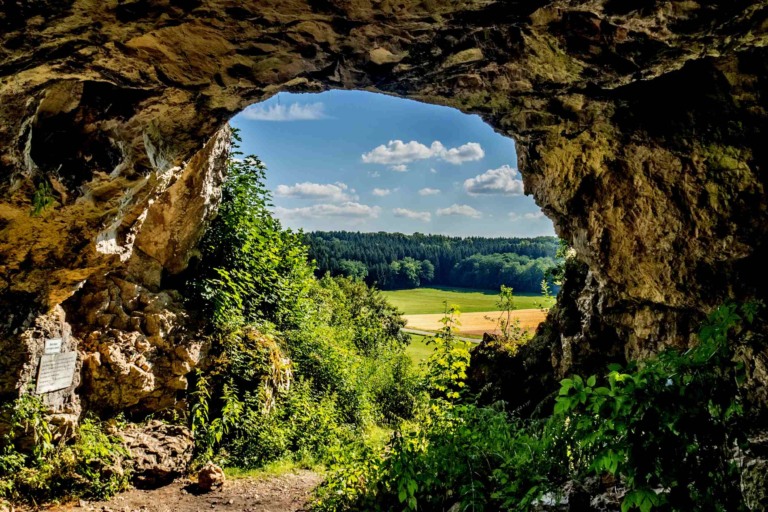
Swabian Jura caves Ice Age Art: Caves and Ice Age Art in the Swabian Jura in Germany is renowned for its exceptional archaeological discoveries, particularly the oldest known figurative art and musical instruments created by early humans during the Ice Age. The caves of Hohle Fels, Vogelherd, Bockstein, and Geißenklösterle are among the key locations within the site. These caves have yielded a wealth of artifacts, including intricately carved figurines, ivory flutes, and other musical instruments. The most famous discovery is the Venus of Hohle Fels, a small female figurine carved from mammoth ivory, estimated to be over 40,000 years old. The Pleistocene epoch spanned from approximately 2.6 million to 11,700 years ago, when early humans, known as Homo sapiens, roamed the Earth, adapting to the harsh environments of glacial periods. The Swabian Jura offered a unique setting for human settlement due to its limestone caves, providing shelter, resources, and a canvas for artistic expression.
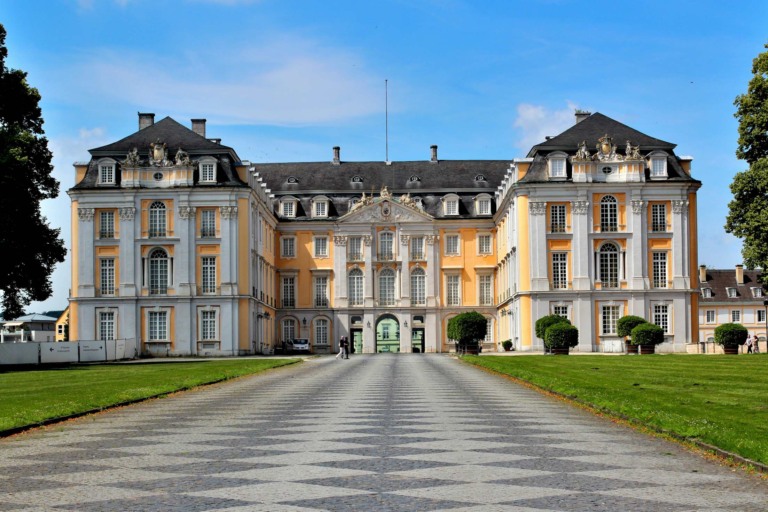
Castles of Augustusburg and Falkenlust, located in Brühl, Germany, are two architectural gems that have stood the test of time. Built in the 18th century.
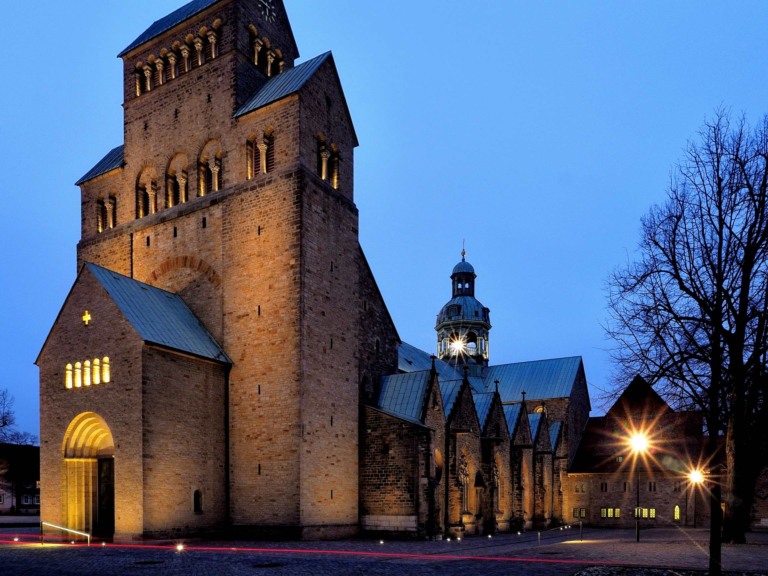
In Hildesheim, Germany, there are two important church buildings: Hildesheim Cathedral and St. Michael’s Church. Hildesheim Cathedral was built in the 9th century and has been fixed up and added to many times since then. The Bernward Doors, which are huge bronze doors with pictures from the Bible and are considered masterpieces of medieval art, are one of the most famous parts of the church. There are also many medieval works of art in St. Mary’s Cathedral, such as the Hezilo chandelier, the Christ column, and the Triumphal Column. Another impressive church building in Hildesheim, St. Michael’s Church, was built in the 11th century and is famous for the way it combines Romanesque and Ottonian types of architecture in a way that no other building does. The church is known for its tower, which is about 100 meters (328 feet) tall and has a lot of paintings and reliefs on it.
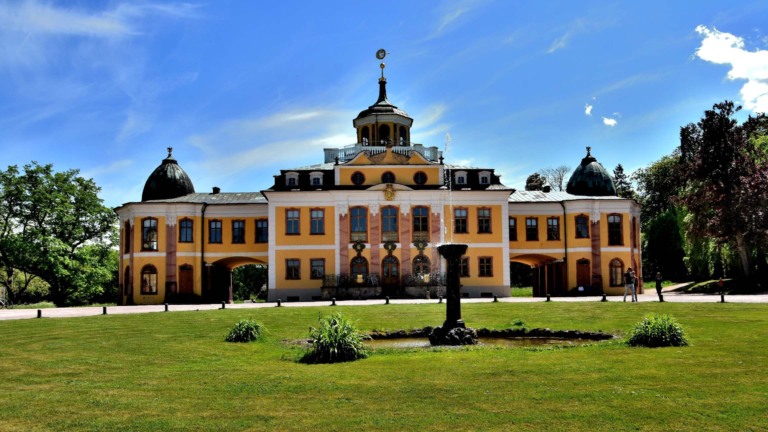
Classical Weimar, also called Klassisches Weimar, is an area in and around the city of Weimar that was named a UNESCO World Heritage Site in 1998.
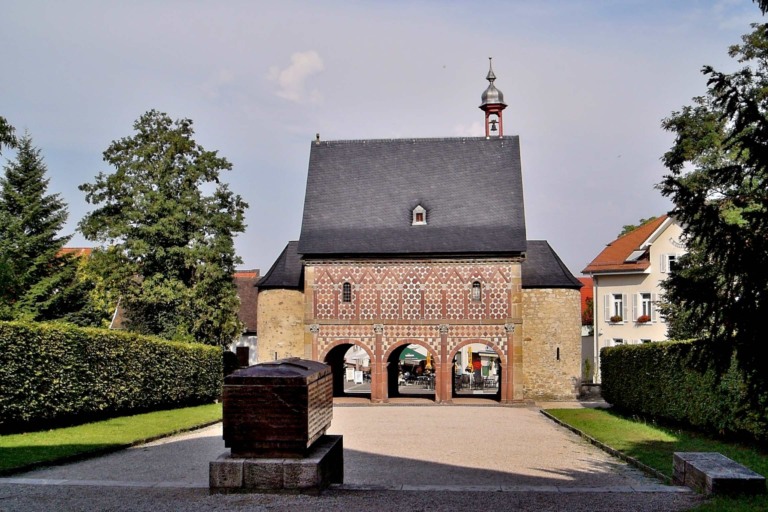
Lorsch Abbey, aka Kloster Lorsch or Reichsabtei Lorsch, is a former Imperial abbey in Lorsch, Germany. In the Carolingian Empire, it was one of the best-known monasteries. Even though they are in ruins, what is left of them is some of the most important pre-Romanesque-Carolingian architecture in Germany. Its history is written down in the Lorscher Codex, which was made in the 1170s and is now in the state archive at Würzburg. In 764, the Frankish Count Cancor and his widowed mother, Williswinda, started the abbey on their farm, Laurissa, as a proprietary church (Eigenkirche) and monastery. It was made in honor of Saints Peter and Paul. Chrodegang, Cancor’s cousin and the Archbishop of Metz, was put in charge of running the monastery by its owners. He became the first abbot. Benedictines from Gorze Abbey, near Metz, moved to the area and set up the abbey.
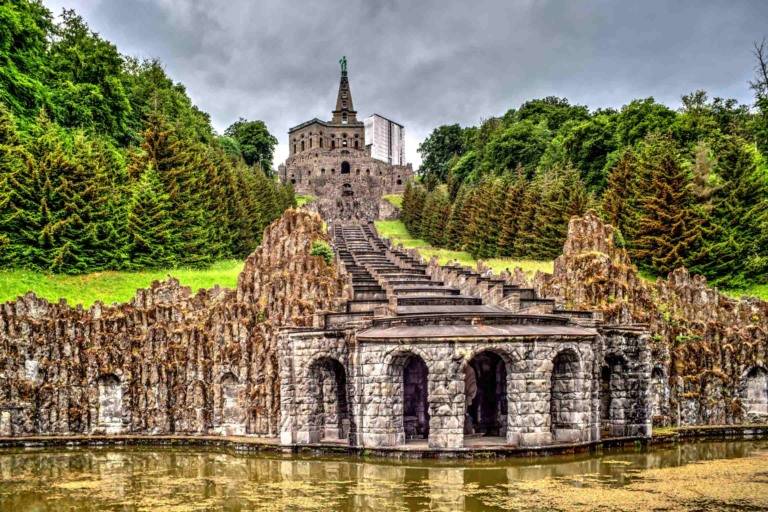
Bergpark Wilhelmshöhe is a long hill that slopes down, and at the top stands a huge statue of Hercules. About 150 years were needed to finish it.
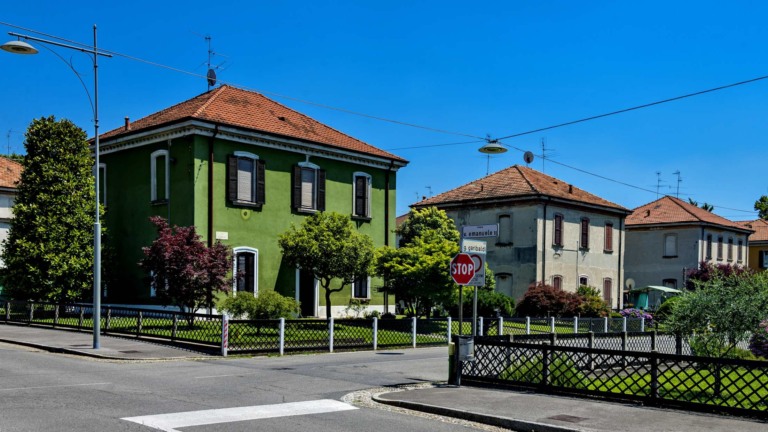
Crespi d’Adda is a historic village and a great example of how to meet the needs of workers in Europe and North America in the late 1800s and early 1900s.
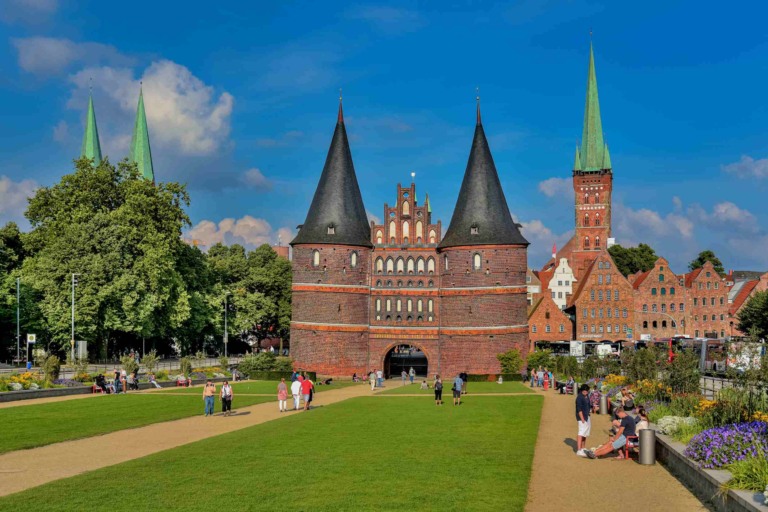
Hanseatic City of Lubeck was the capital of the Hanseatic League, formed in the 12th century, and was the most important trading center in northern Europe.
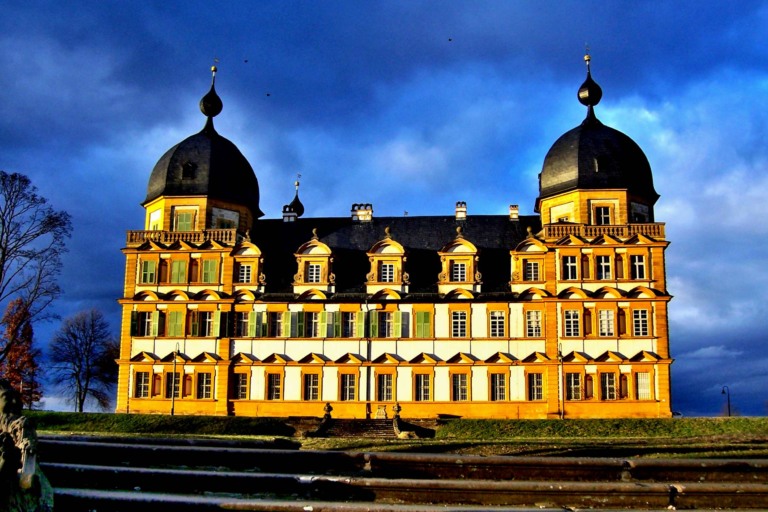
Bamberg is a town in Upper Franconia, which is in the north of Bavaria in southern Germany, on the river Regnitz, not far from where it meets the river Main.
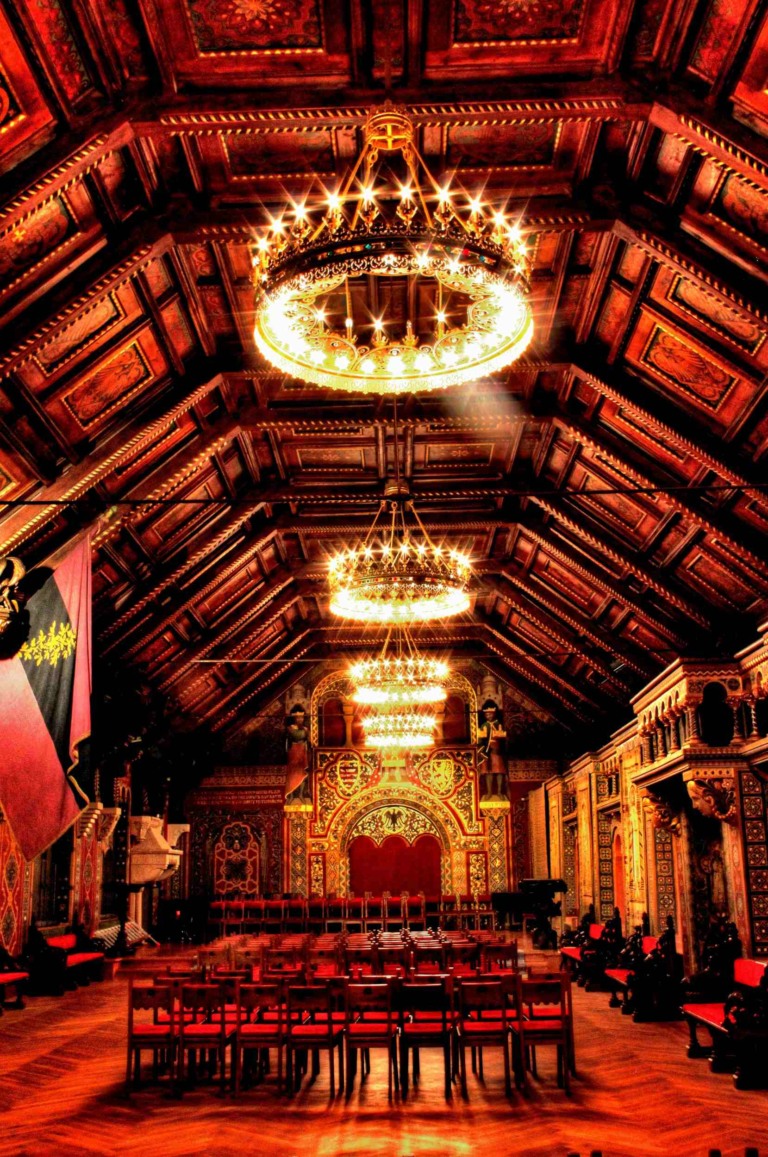
Wartburg Castle was where St. Elisabeth of Hungary lived and where Martin Luther translated the New Testament of the Bible into German.
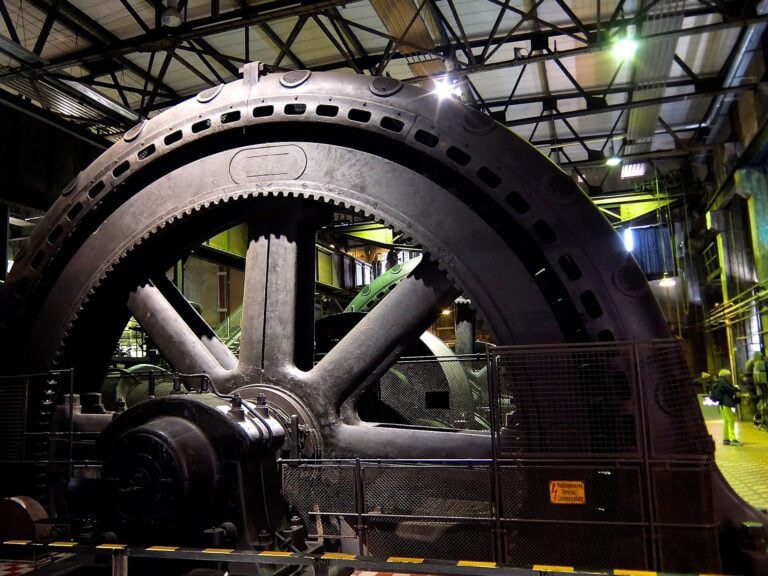
Volklingen Ironworks, or Völklinger Hütte, is an old blast furnace building in Saarland, Germany, a unique example of how pig iron was made in Western Europe.

Naumburg Cathedral, aka Naumburger Dom, is a medieval cathedral located in Naumburg, Germany, renowned for its exceptional Gothic and Romanesque architecture, impressive sculptures, and rich history. The cathedral is dedicated to St. Peter and St. Paul and stands as a testament to the religious and cultural heritage of the region. One of the most notable features of the cathedral is the West Choir, which houses the famous Naumburg Masterpieces. These sculptures, created by an unknown artist known as the Naumburg Master, depict the founders of the cathedral, Uta and Ekkehard, as well as other significant figures. The cathedral features beautiful Gothic-stained glass windows that add to its overall aesthetic appeal. These windows often depict biblical scenes and figures. The construction of Naumburg Cathedral began in the 13th century and continued over several centuries. The cathedral has witnessed various historical events and has undergone modifications and renovations. Here are some key points about Naumburg Cathedral:











